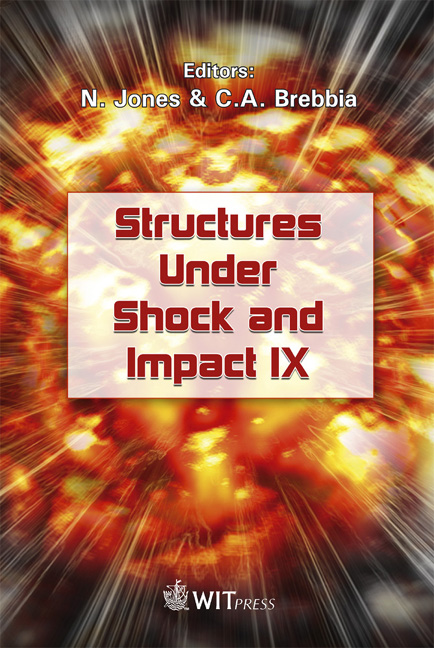Effect Of Silty-sand Compressibility On Transferred Velocity From Impulsive Blast Loading
Price
Free (open access)
Transaction
Volume
87
Pages
11
Published
2006
Size
573 kb
Paper DOI
10.2495/SU060081
Copyright
WIT Press
Author(s)
K. Scherbatiuk, D. Pope, J. Fowler & J. Fang
Abstract
A common assumption made in calculating response of walls subjected to blast loading is that the reflected blast loading is often based on rigid body dynamics along the thickness of walls and zero particle velocity at the fluid-structure interface. Of interest to the authors is the development of a quick-running impulse-dominated structural response model for soil-filled concertainer walls that assumes reflected impulse assuming zero particle velocity during the course of loading. The magnitude of response will directly depend on the velocity transferred in the thickness direction by the blast loading. The aim of this study is to assess whether a reduction factor should be applied to reduce the initial velocity corresponding to the zero-particle-velocity reflected impulse for concertainer walls filled with compressible silty-sand. Results obtained from a 1-D numerical program using a simple analytical coupling model are validated with those obtained from a commercial coupled Computation Fluid Dynamics and Computational Solid Mechanics (CFD/CSM) code. Both coupled and uncoupled loading combinations are investigated for rigid body, elastic, and compressible silty-sand material behaviours using the simple 1-D numerical program developed and validated. Graphical results for a range of peak blast pressures are compiled to present the differences in zero-particle-velocity reflected impulse required to attain the same velocity in the thickness direction for each different combination. The resulting differences in charge standoffs between each combination are compared as well for a number of different charge sizes. For this specific problem of calculating transferred velocity in the thickness direction for a silty-sand filled concertainer wall subjected to impulsive blast loading, results that include coupling only lead to a small difference in the resulting charge standoff and therefore reasonable results will be achieved assuming uncoupled loading and rigid body dynamics. Keywords: blast, impulse, soil, sand, rigid-body, compressibility, concertainer, hesco.
Keywords
blast, impulse, soil, sand, rigid-body, compressibility, concertainer, hesco.





